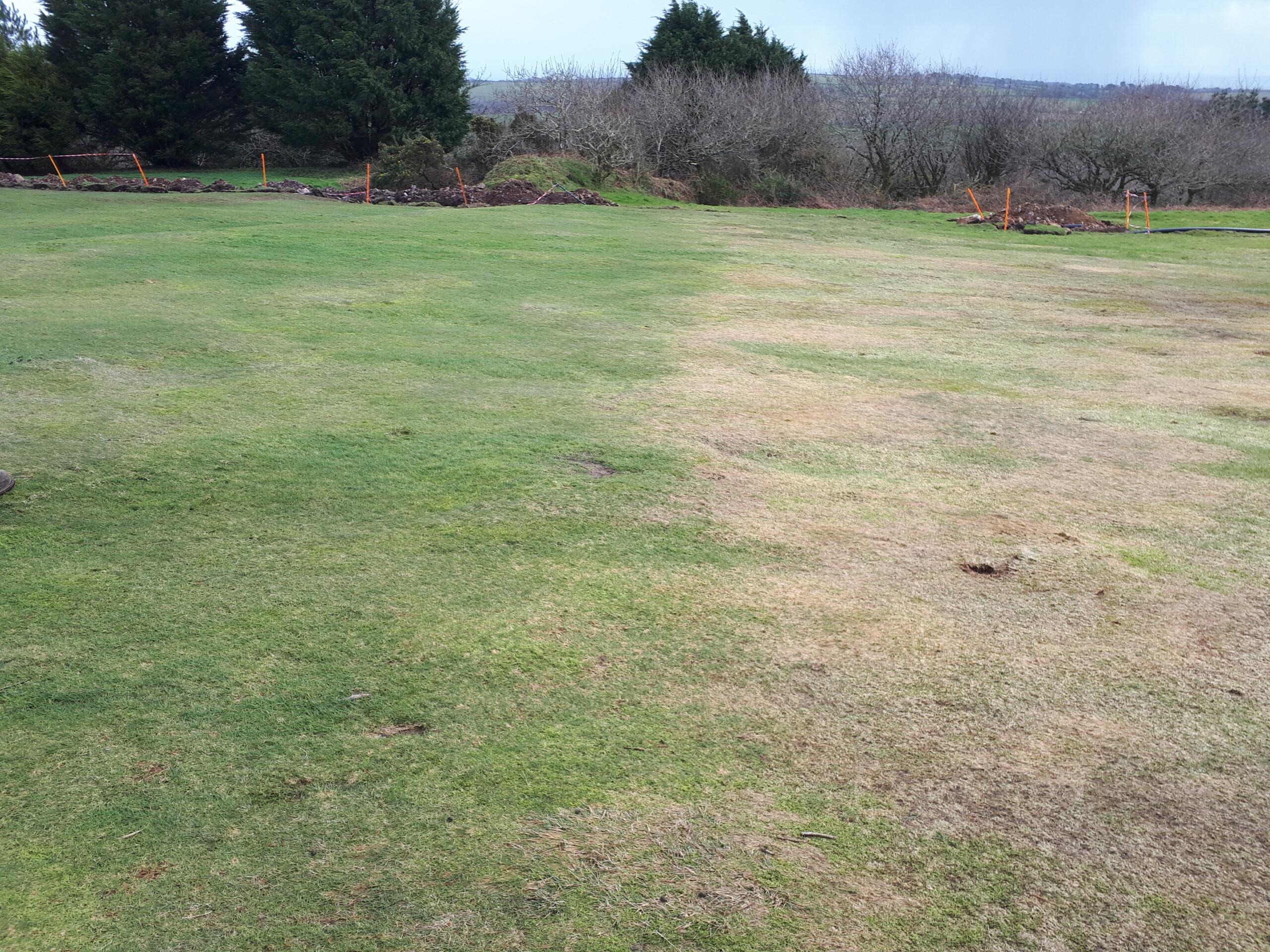There are about 300 species of Crane fly in the UK & Ireland.
The vast majority of these don’t have any impact on turf, many live only in woodland areas and eat rotting wood.
The first Crane flies are seen in the fossil record 230 million years ago, so they are not a new thing and they are not going anywhere soon, being a pretty successful group!
Historically they’ve not been a huge issue in managed turf as we had chemical options available which did a good job at keeping numbers in check. Since the withdrawn of these chemicals we’ve seen much more challenging conditions on affected sites.
Damage

Of all the Crane fly species just two are considered major turf pests (simplifies things a little):
- Tipula paludosa – European crane fly
- Tipula oleracea – Marsh crane fly
If we had an FBI style “Most wanted” list Tipula paludosa would be right at the top.
Chafer grubs do damage to plant health, and get dug up by larger animals, but don’t really come to the surface to feed like Leatherjackets do. This gives them a whole other angle to damage turf and can have more of an effect on surface conditions.
Damage can manifest in a number of ways:
Plant damage:
- Reduced rooting, as eaten by grubs leading to – reduced drought tolerance, reduced ability to access nutrients
- Leatherjackets living in aeration holes keeping scares from healing over, eating roots in the holes and shoots at the surface
- Reduced plant vigor leads to slower or no infill of gaps in turf
Secondary damage by larger animals searching for grubs to eat:
- Bird pecking
- Badgers & foxes pulling back turf or damaging surface
Loss of surface stability
- People or animals moving over the surface damaging weakened turf.
The turf on the left side of the photo below had an Acelepryn application, and the right hand side had none. No other differences in turf maintenance.
Its a great way to show the effects that grubs under the surface can have on turf health.

Acelepryn is now fully registered for professional use in the UK & Ireland, and does a great job at controlling Leatherjackets and chafer grubs in managed turf.
We always talk in terms of Integrated Turf Management.
Whilst Acelepryn is a great product its important to consider additional levers we can pull to manage soil pests to ensure we get the best results and deliver great quality surfaces.
To read more about the Total approach to Leatherjacket control click here. For those in very high population situations, or where every avenue must be pursued to stop surface damage.
Timing is Key for Leatherjacket control
As Acelepryn acts primarily on the early larval stages (instars 1 & 2) its important to time applications correctly.
The active ingredient is ingested and paralyses them, controlling the early stages which don’t have the reserves to survive.
Late stage larvae, pupae and adults don’t feed so the product is less effective on them.

Trials have shown best results when Acelepryn is applied Mid/late October which is towards the end of the peak adult flight for our target species (Tipula paludosa). This species has just the one adult flight per year in the Autumn.
Simple. But to confuse matters the second species of concern Tipula oleracea has two generations per year. So adults fly in the Spring and Autumn for that second generation.
Added to this is the array of other crane fly species we may be seeing on the wing between Spring and Winter to divert and confuse.
We have 4 years of pest tracker data now on crane fly, along with supporting field and user trials to confirm the best application timing to get control of Leatherjackets.
One of the best ways to monitor adult crane fly populations and flight timings for your site it to see them emerging/pupae cases left in short cut turf.
If you just see an adult crane fly on the turf it may be the wrong species or have flown/blown in from elsewhere.
But pupae cases (like in the image below) mean that Leatherjacket belongs to you!
Get the team to watch out for pupae cases is we move into Autumn to help understand the species and population size you are dealing with.

More advice to come on the blog on Leatherjacket management.
For those who cant wait, lots of information on the Acelepryn product page on the Syngenta turf website, and for lawncare we’ve added a specific Q&A.




